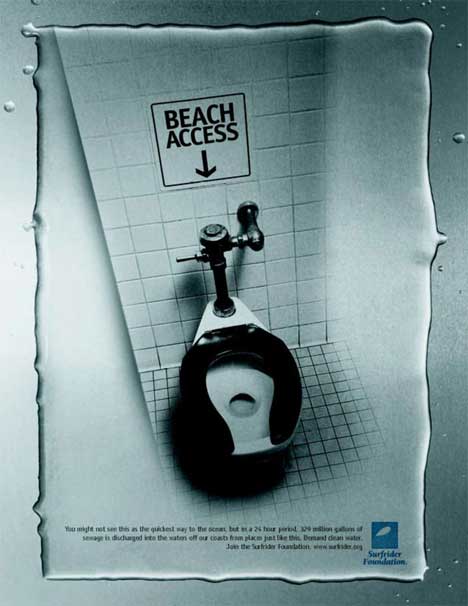For some reason, foodborne illness outbreaks involving raw milk, or organic or some other small food category require exaggerated level of  proof to be believed. Epidemiology doesn’t seem to count, neither does knowledge of microbiology.
proof to be believed. Epidemiology doesn’t seem to count, neither does knowledge of microbiology.
There’s at least five people sick with E. coli O157:H7 linked to consuming raw milk from the Hartmann Dairy Farm in southern Minnesota.
Yesterday, the farm released a statement saying,
"As of today, there is no evidence of any harmful bacteria in any raw milk, cheese, meat or other product sampled from the Hartmann Farm. The State has engaged in a serious regulatory and potentially criminal action in a grossly negligent manner with total disregard for the defamatory content of their media campaign."
OK, Bart (below, left, exactly as shown).
Today, the Minnesota Department of Health answered some questions:
What evidence do you have that raw milk from the Hartmann farm caused the illnesses?
This investigation began like many other foodborne investigations: Someone becomes ill, sees their physician and the physician sends a stool specimen to a clinical laboratory. If that laboratory finds, or “isolates”, one of a number of illness-causing bacteria (eg., Salmonella, E. coli O157:H7), they send that bacterial isolate to the MDH Public Health Laboratory (PHL) for further testing. Each bacterial isolate is DNA fingerprinted by a technique called pulsed-field gel electrophoresis (PFGE).
During May 2010, E. coli O157:H7 isolates from 5 patients sent by separate clinical laboratories to the MDH PHL were found to all have the same DNA fingerprint by PFGE testing.
This particular DNA fingerprint type (which also can be called a “strain”) of E. coli O157:H7 had never been seen before in Minnesota. The fact that multiple patients all were infected with this new strain in such a tight timeframe indicates that there was a common source for the illnesses. In other words, the patients must have acquired their infection from the same source.
In any foodborne illness investigation, MDH epidemiologists interview patients about an extensive array of possible exposures. These interviewers use a standard questionnaire and interview technique. This includes asking questions about what the ill people ate, including meat, produce and other food items. It also includes questions about recreational water and drinking water, contact with animals, daycare attendance, and more.
In this outbreak, the ill people came from communities across Minnesota, and the only exposure the cases had in common was consumption of raw dairy products from the Hartmann farm. This connection, and the fact that  the same strain of E. coli O157:H7 found in the ill people was found in several animals and from several environmental samples on the Hartmann farm, clearly indicates that the farm was the source of the E. coli O157:H7 that made the people ill.
the same strain of E. coli O157:H7 found in the ill people was found in several animals and from several environmental samples on the Hartmann farm, clearly indicates that the farm was the source of the E. coli O157:H7 that made the people ill.
What is the significance of finding E. coli O157 in the environmental samples from the farm?
The strain found on the farm matches the strain found in the cases of illness. Again, this is a strain that has never been seen before in Minnesota.
This tells us that the bacteria that sickened the people was on the Hartmann farm and since several of the people that became ill never visited the farm, their only potential source would have been food products from the farm.
Did you find the outbreak strain in dairy product from the cases’ homes or from the farm?
The outbreak strain of E. coli O157:H7 has not been found in product yet. However, product samples that were collected from the farm were obtained one week to several weeks after production of products that made people sick. Other strains of Shiga toxin-producing E. coli were found, indicating an ongoing problem with contamination.
The fact that the outbreak strain was not found in samples of product taken from the farm or homes does not mean it wasn’t in the product that sickened the individuals. In many cases, only particular batches of product may have been contaminated. The product from the contaminated batches may not be available for testing because it has already been consumed. Even if the contaminated batches are available for testing, the contamination may not be uniformly distributed throughout the product. It can be difficult to find the “needle in the haystack” when only small amounts of product are able to be used for a laboratory test. The fact that some pathogen was not found in a sample taken today does not mean it wasn’t there yesterday or a week ago, or won’t be there tomorrow. Also, since raw milk contains many types of bacteria it is a difficult process to isolate individual bacteria growths and find the disease-causing strains.
The outbreak strain of E. coli O157:H7 was found in the manure of some individual calves, sheep, and cattle pens. Of note, the calves were likely drinking the same milk as that consumed by the cases.
Standard public health practice does not require finding the illness strain of pathogen in either environmental or product samples in order to determine the source of an outbreak and before intervention to prevent further illness should be initiated. In fact, it is quite rare in foodborne investigations that food product is available for testing as it is often perishable or has been completely consumed by the time the outbreak is recognized. State health and agriculture officials often act on epidemiologic evidence to remove contaminated products from the marketplace and prevent additional illnesses. Indeed, to do nothing in the face of such compelling evidence would be irresponsible – regardless of the size or nature of operation implicated.
Are there more cases being investigated?
Yes, MDH has received additional reports of illness in several consumers of Hartmann dairy products that it is investigating.
.jpg) confirmed the presence of Salmonella Enteritidis. Larry Schultz Organic Farm is cooperating with the MDA investigation and has issued a voluntary recall of the products.
confirmed the presence of Salmonella Enteritidis. Larry Schultz Organic Farm is cooperating with the MDA investigation and has issued a voluntary recall of the products.

 known as filberts) purchased from bulk bins at retail food stores. Three cases have been identified in Minnesota, three in Wisconsin, and one in Michigan.
known as filberts) purchased from bulk bins at retail food stores. Three cases have been identified in Minnesota, three in Wisconsin, and one in Michigan..jpeg) The patients told Health Department investigators
The patients told Health Department investigators failing inspections, city inspectors found numerous problems remained, from food being left out for hours to "dozens of dead roaches in an unused hallway in the basement," according to an inspection report.
failing inspections, city inspectors found numerous problems remained, from food being left out for hours to "dozens of dead roaches in an unused hallway in the basement," according to an inspection report. details about his dairy operation that is under a bitterly contested impoundment order.
details about his dairy operation that is under a bitterly contested impoundment order. But when the beach at Diamond Point Park in Bemidji, Minnesota, was closed Thursday, I paid attention, because three swimmers seem to have acquired not the fecal coliform, but the far more dangerous E. coli O157:H7.
But when the beach at Diamond Point Park in Bemidji, Minnesota, was closed Thursday, I paid attention, because three swimmers seem to have acquired not the fecal coliform, but the far more dangerous E. coli O157:H7. extensive recall of peanut butter, cheese and other products in January.
extensive recall of peanut butter, cheese and other products in January..jpg) Since May 26, including the new cases, a total of eight E. coli O157:H7 cases in seven different homes have been linked to products from the Hartmann Dairy Farm.
Since May 26, including the new cases, a total of eight E. coli O157:H7 cases in seven different homes have been linked to products from the Hartmann Dairy Farm.  proof to be believed. Epidemiology doesn’t seem to count, neither does knowledge of microbiology.
proof to be believed. Epidemiology doesn’t seem to count, neither does knowledge of microbiology. the same strain of E. coli O157:H7 found in the ill people was found in several animals and from several environmental samples on the Hartmann farm, clearly indicates that the farm was the source of the E. coli O157:H7 that made the people ill.
the same strain of E. coli O157:H7 found in the ill people was found in several animals and from several environmental samples on the Hartmann farm, clearly indicates that the farm was the source of the E. coli O157:H7 that made the people ill..jpg) Producers of food, big and small, have all employed various lines over the years to say, the evidence doesn’t really prove a specific food made a bunch of people barf or kill them. Governments have done the same thing in protecting various food-producing industries. The widespread standard of proof in the form of DNA fingerprinting was just being contemplated when I graduated with a molecular biology and genetics degree in 1985, and was dependent on a couple of other technologies, especially polymerase chain reaction of PCR amplification of small amounts of DNA.
Producers of food, big and small, have all employed various lines over the years to say, the evidence doesn’t really prove a specific food made a bunch of people barf or kill them. Governments have done the same thing in protecting various food-producing industries. The widespread standard of proof in the form of DNA fingerprinting was just being contemplated when I graduated with a molecular biology and genetics degree in 1985, and was dependent on a couple of other technologies, especially polymerase chain reaction of PCR amplification of small amounts of DNA. Minnesota. Furthermore, laboratory tests confirmed that cheese samples collected last week from the farm contained another form of Shiga toxin-producing E. coli, demonstrating that an ongoing pathway of contamination existed on the farm. …
Minnesota. Furthermore, laboratory tests confirmed that cheese samples collected last week from the farm contained another form of Shiga toxin-producing E. coli, demonstrating that an ongoing pathway of contamination existed on the farm. …